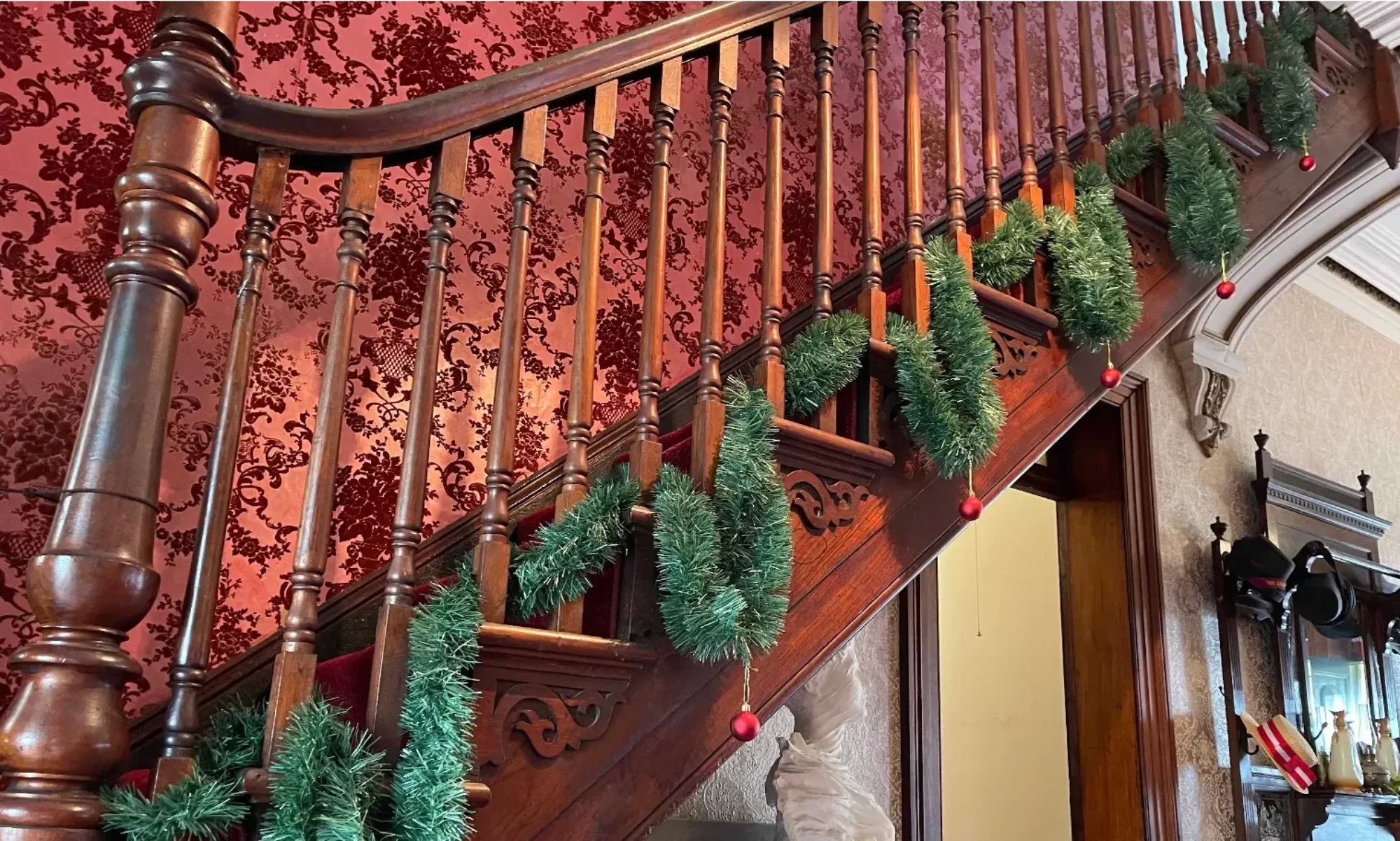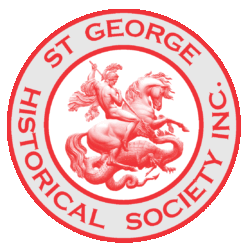Extracts from the Citizen Newspapers 1894
Telephone Service – 24th February, 1894
A movement is on foot to try and get a telephone exchange at Rockdale and already eight or nine of the residents have handed in their names as willing to become subscribers. Fifteen subscribers are required for a day service, from 9 a.m. to 8 p.m. and twenty-five subscribers for a day and night service. The rates for local connections with suburban exchanges within a radius of one mile for providing the line and telephone complete are for a business establishment, £10 per annum; a private house £6 per annum, and each additional quarter of a mile one pound. There is no need for us to impress upon our readers who daily use the telephone in the City, what a boon it is, nor the desirability of it, and it only requires a little united action to bring to their homes, for a mere song, what would cost one individual hundreds of pounds. It will be noticed by the scale of charges that a telephone at a private residence costs less than at a place of business so that an appeal is also made to those who would not require it solely for business purposes. Some might say, “What is the good of a telephone to me at my private house?” We would reply with one single instance, out of many, that could be abduced, viz, that to those who have families, in cases of sickness where the services of a doctor might be speedily required, it would be invaluable, and to business men who reside in Rockdale and its vicinity, and who have telephonic communication with their city business, it would be most useful in ways too numerous to particularize; and, last, but not least, to the business people in Rockdale it would be of incalculable service, and in one year would save considerably more than its cost. It would save many a trip into town when they would sooner be on the spot, and in case of a necessity arising for some immediate filling up of an order of a line they happened to be out of, and which might risk the whole thing, it could be saved and arranged in five minutes. Those wishing to join in the movement are requested to send in their names without delay to the Mayor of Rockdale, W. Taylor Esq., Railway Street, Rockdale, and it ought to be attended to as soon as possible. Alderman Callinan also spoke of the need of this being put up.

St. George’s Electorate – 12th May, 1894
Illawarra Line
There are many thousands of Sydney people who know little or nothing of this, one of the most beautiful and attractive of our suburbs, simply because it does not lead to one of the holiday resorts for pleasure-seekers. Yet for beauty of scenery we are not aware of any suburb which excels it; and for attractive residential sites, easily accessible, at moderate rates, with frequent trains running punctually from Sydney at 5.10 a.m. to 11.38 p.m., and from Hurstville 5 a.m. to 11.50 p.m., persons travelling on business or pleasure have every accommodation which Sydney residents enjoy.
St. George’s electorate commences at Arncliffe, on Cook’s River, five miles from Sydney and terminates at Hurstville, on the George’s River on the south, bounded on the east by the shores of Botany Bay and on the west by a continuation of Saltpan Creek, comprising an area of about 40 Square miles. The towns on the railway line are Arncliffe, Rockdale (with a tramline to Lady Robinson’s Beach), Kogarah (with a tram-line to Sans Souci), Carlton and Hurstville.

Arncliffe
At this point we get clear of Sydney proper, with its continuous lines of streets, with their closely-packed houses, with back premises 12 by 14ft, the hotbeds of disease, and get into the country proper, with its fresh air and breezes from Botany Bay charged with life-giving ozone.
In this neighbourhood are many attractive residences within the reach of every class of society. There is a considerable elevation above the station, on the highest point of which is the handsome residence of Mr Barden surrounded by a verandah on the upper floor, with some enchanting views, including Botany Bay and Cook’s River with its new improvements and reclaimed land, which will become very valuable for manufacturing and other purposes. In addition to the residences there are several large landowners who have sites for sale. Campbell’s Hill, for instance, has a high and commanding position; Dr Clay Hill etc. Arncliffe is one of the wards of the Municipality of Rockdale, to which it extends on the west side of Rocky Point Road as far as Harrow Road, where the Kogarah Municipality commences.
Rockdale
Rockdale is the principal business centre of St. George’s, and is divided into three wards – Arncliffe, Rockdale and Scarborough, constituting the Municipality of Rockdale. It has an area of about eight square miles and an estimated population of 5,000; has a Town Hall and School of Arts, with a good library. There are several first-class stores and business houses and in the neighbourhood some very nice residences, with more or less ground up to six acres, well planted with fruit trees. There is a large number of market gardens, producing first- class vegetables, some of these being kept by the irrepressible and indefatigable Chinamen. The immediate neighbourhood is well adapted for fruit and vegetable growing, to which might be added fruit canning; it only requires capital and the right people. There are Churches of different denominations, also public schools. A branch of the A.J.S. Bank; two hotels; a College for boys (see Advt. of Scot’s College). A tramway runs, on the arrival of each train, to Lady Robinson’s Beach, about a mile, where there are baths for both sexes. This could be made a very attractive pleasure resort on the same plan as Coogee, and Bondi, and ought to pay if taken up with spirit.
It is much to be regretted that many of the residents will waste their time and spend their money in going to Sydney to get bargains (?), when they can buy the same goods on the spot at the lowest Sydney rates, and keep the money at home; also, they will subscribe to the Sydney School of Arts, pay a pound per annum subscription and take all the trouble of going to Sydney to exchange their books, while they can get the selection from a good library on the spot for three shillings a year! Perhaps they want a free library as well as a free paper.
This is a good live town to live in, as there are frequent dramatic and other entertainments, which could be supplemented by lectures, if encouraged. There is a latent spirit of enterprise in the people, but they are shy about supporting a paper run in their interests. There is an excellent hotel, the Royal, for the accommodation of visitors.
Kogarah and Sans Souci
This Municipality is divided into three wards – East, Middle and South. It has an area of about five square miles, and an estimated population of 4,000; has a School of Arts and Public Library. It extends from Harrow Road to Oatley, and has seven churches of different denominations.
On leaving the station at Rockdale, the railway line is on the up grade, and although the ground is rather rocky and not suitable for cultivation, it presents most charming sites for residences, with views at various points of Botany Bay, with well wooded country intervening, and the charming little suburb of Sans Souci, to which a tram-line runs on the arrival of the trains from Sydney.
We commend our town readers to pay a visit to this locality, particularly if seeking a country residence.
The Moorefield Racecourse is an attraction, and there are many horses in training in the neighbourhood. This is one of our holiday attractions. The Moorefield Hotel has extensive stabling and the landlord as a sporting man will command a good share of support.
Carlton
This is little more than a railway station, but between it and Botany Bay there is one of the greatest attractions in the florists and nurserymen’s grounds, where the flowers which made the great display at the late exhibition of chrysanthemums were principally grown. A reference to our advertising columns will give the names of principal growers, and a visit to this beautiful locality, will be a treat for those who take an interest in the subject , and will give them an opportunity of securing some beautiful specimens for their grounds. We regret that for reasons stated in our last issue, that we were prevented from giving a description of our late flower show as we would have wished. The Royal Hotel at this place, kept by Mr Mitchell (see advertisement) is a first-class house which we recommend to visitors.

Hurstville
This Municipality is divided into three wards – Bexley, Hurstville and Peakhurst. It has an area of about 12 miles square, and an estimated population of 3,500, being an increase of about 750 over 1890. It has nine churches and four schools, a library, and the scenery is very attractive. There are indications of gold in the neighbourhood, resulting so far in little more than colour. There is some desirable land here worth the attention of investors.
To sum up. It is the general impression that the first step towards getting the several Municipalities out of their financial difficulties, will be a Bill for Local Government, to enable the Municipalities to collect overdue rates and force the land, now held by speculators, into the market. In the meantime the necessity for retrenchment is felt very severely by those dependent on local work, and the refusal of government support in the shape of customary subsidies, leaves the Municipalities helpless for the present.
We have to thank Mr George W Leeder, Council Clerk of Hurstville, and Mr Sayers of Kogarah, for their kindness in furnishing information, also the Mayor of Rockdale, Mr W Taylor, for his valuable suggestions; and trust the publicity given in this article will be as we wish it of value to the electorate, and a proof of the value of a local paper. The floral display at this station is quite an attraction. Mr Hall, the station-master, deserves a notice for his good taste.
This article was first published in the December 1964 edition of our magazine.
Browse the magazine archive.

